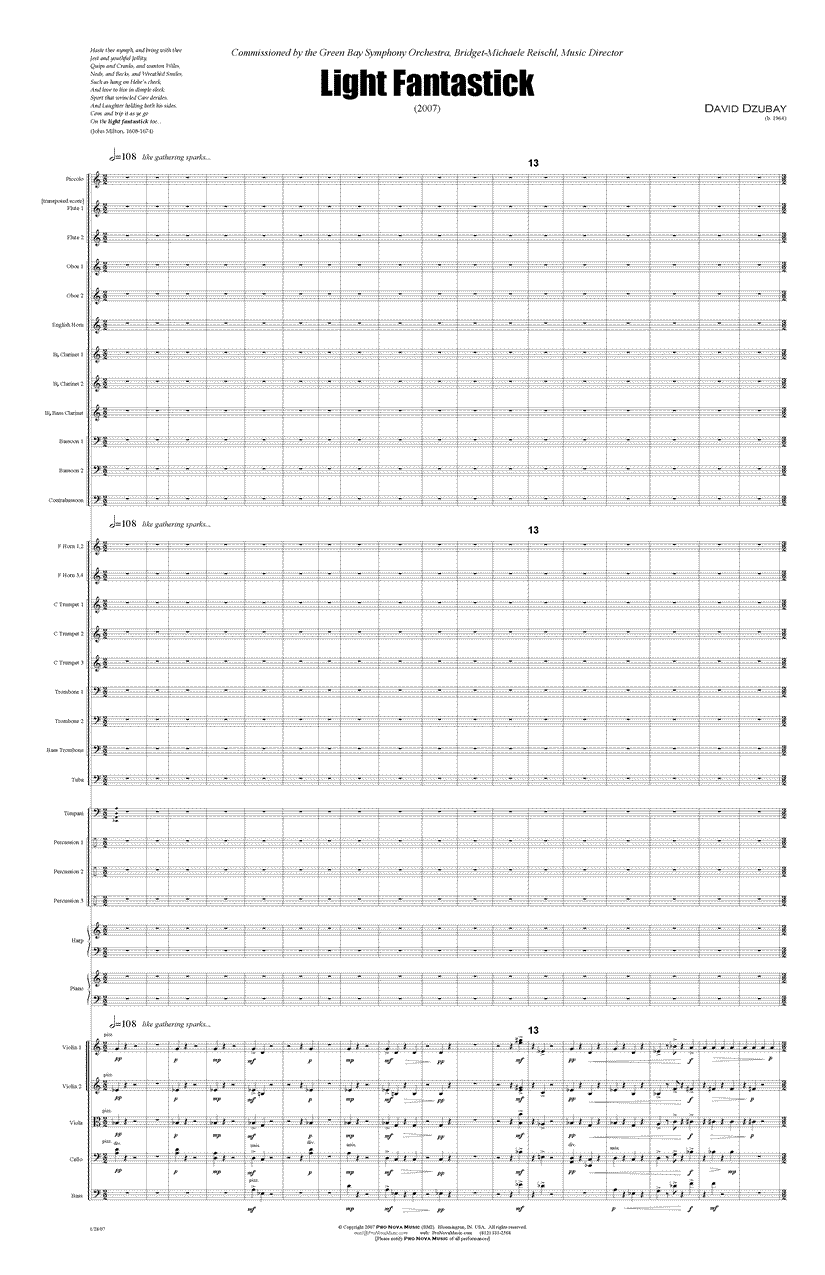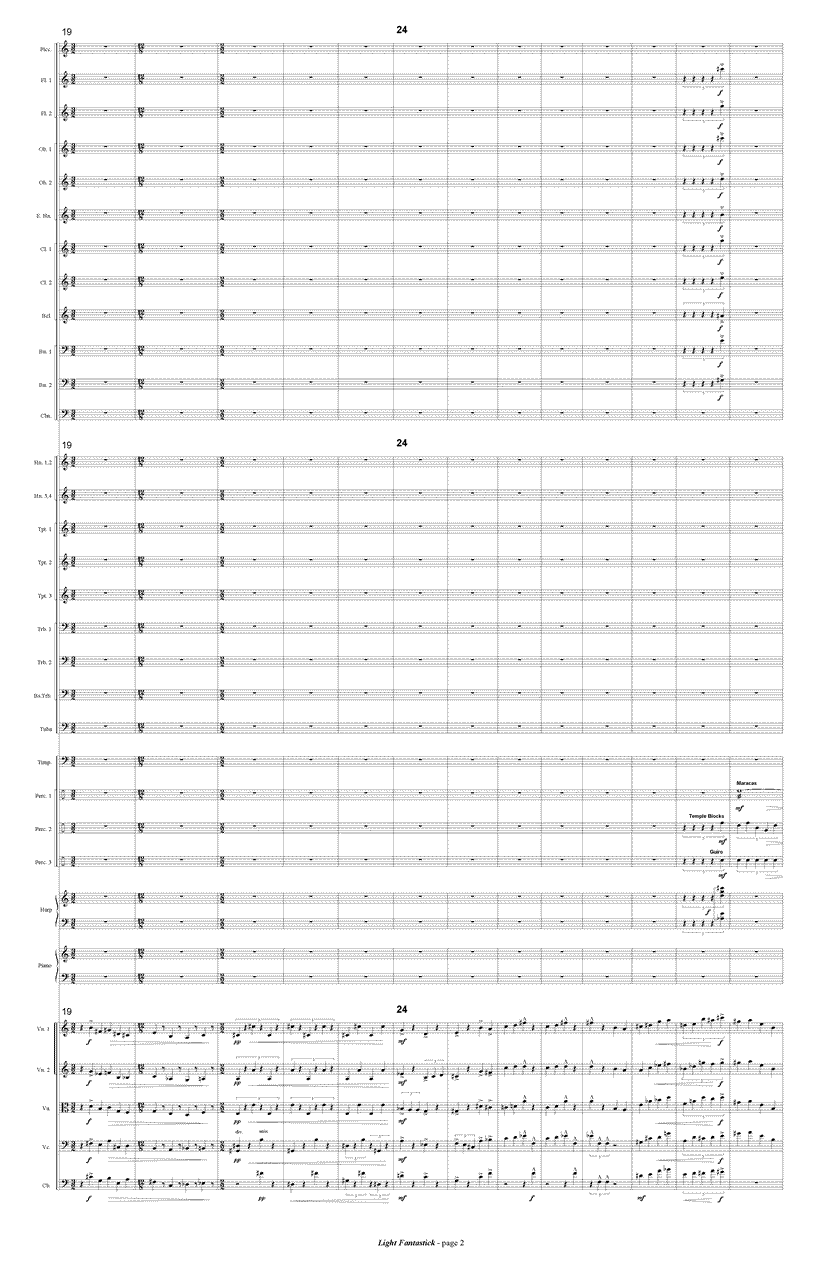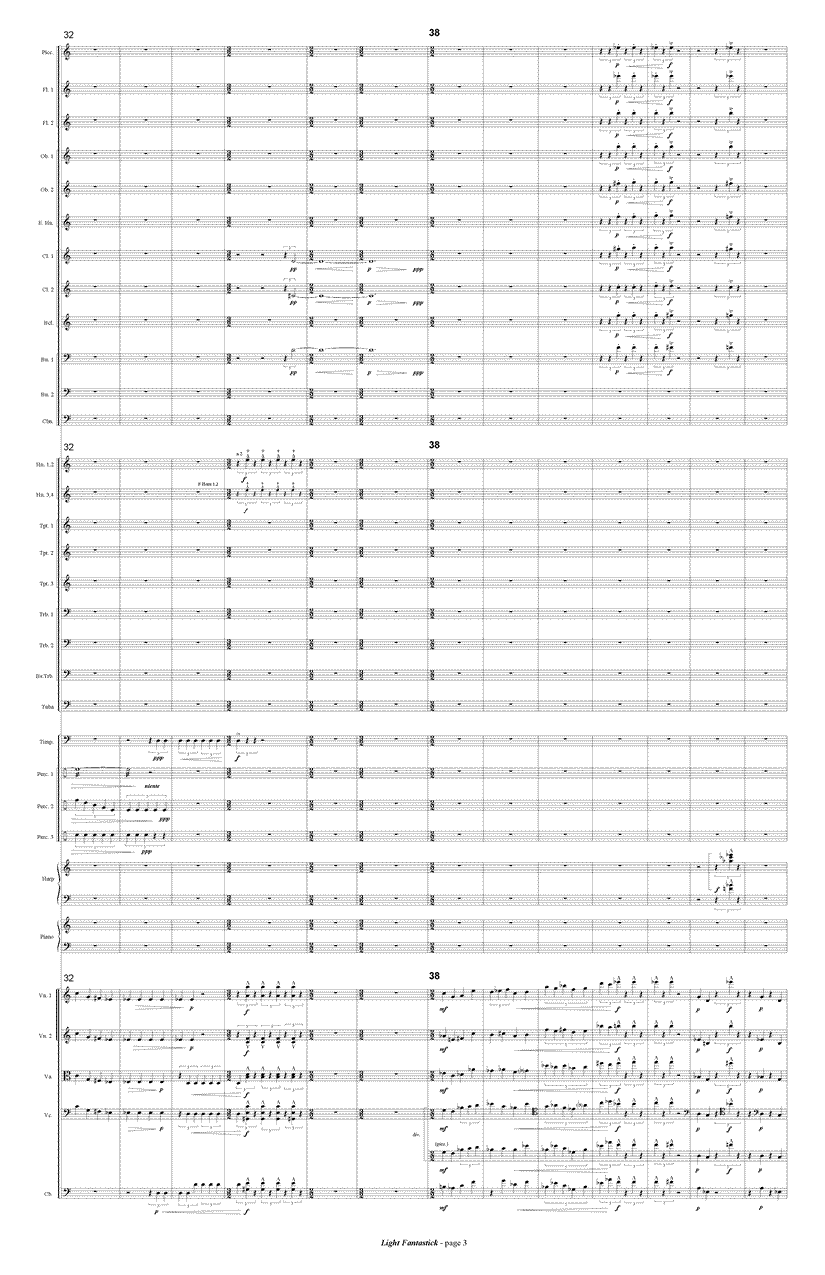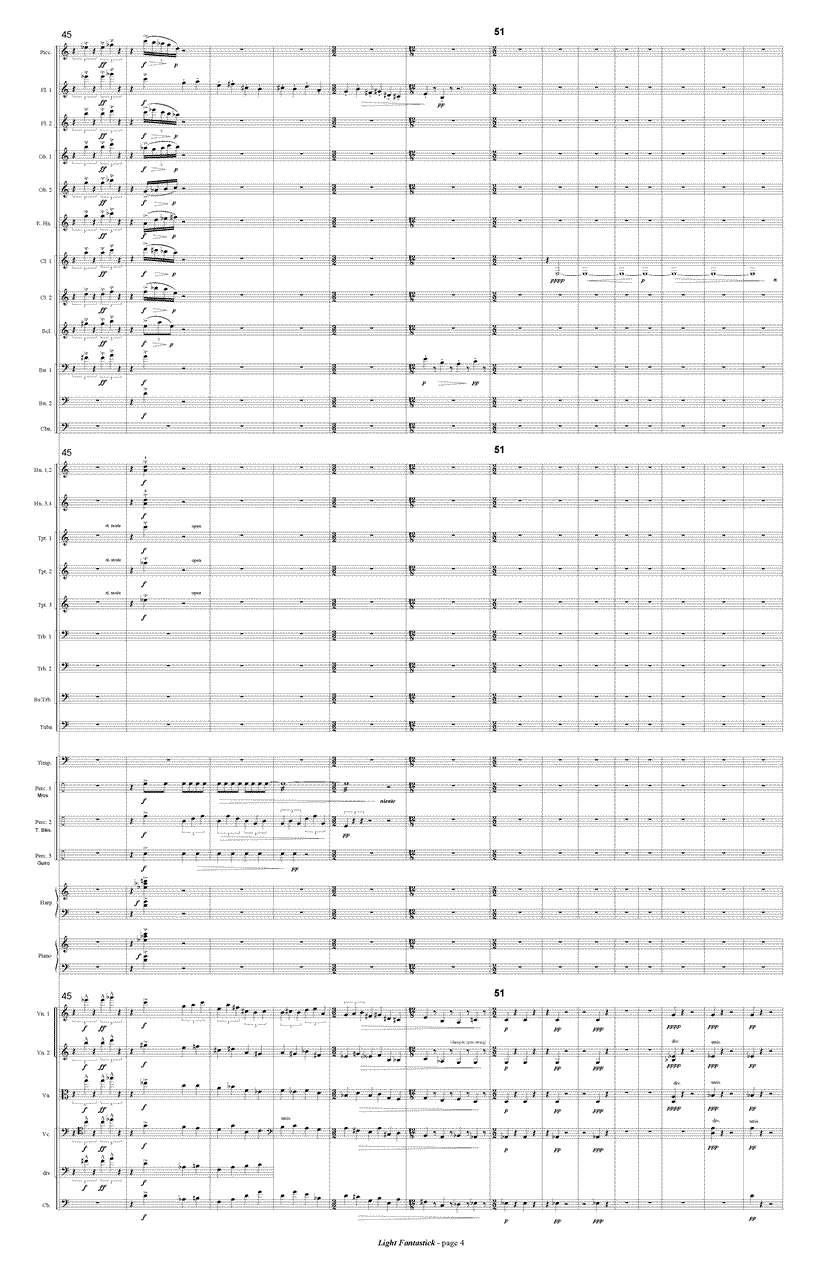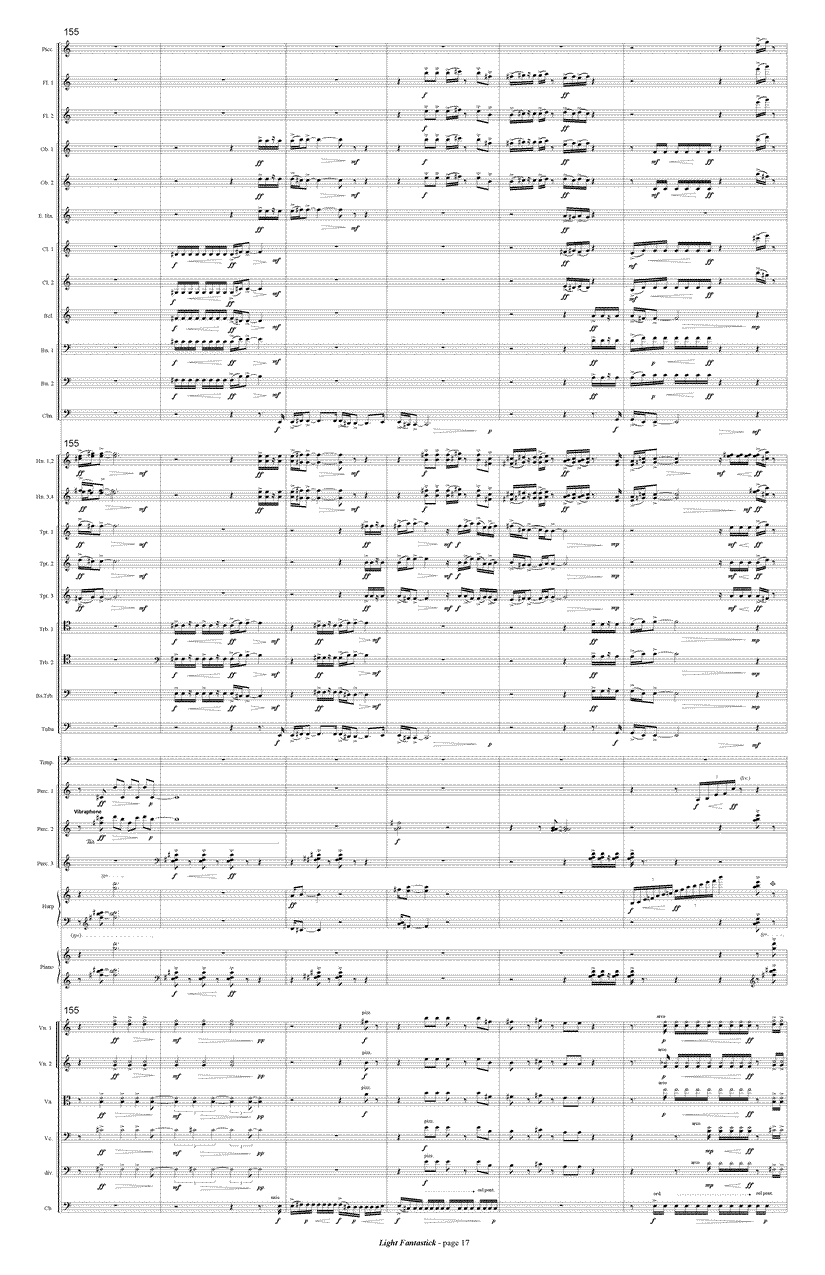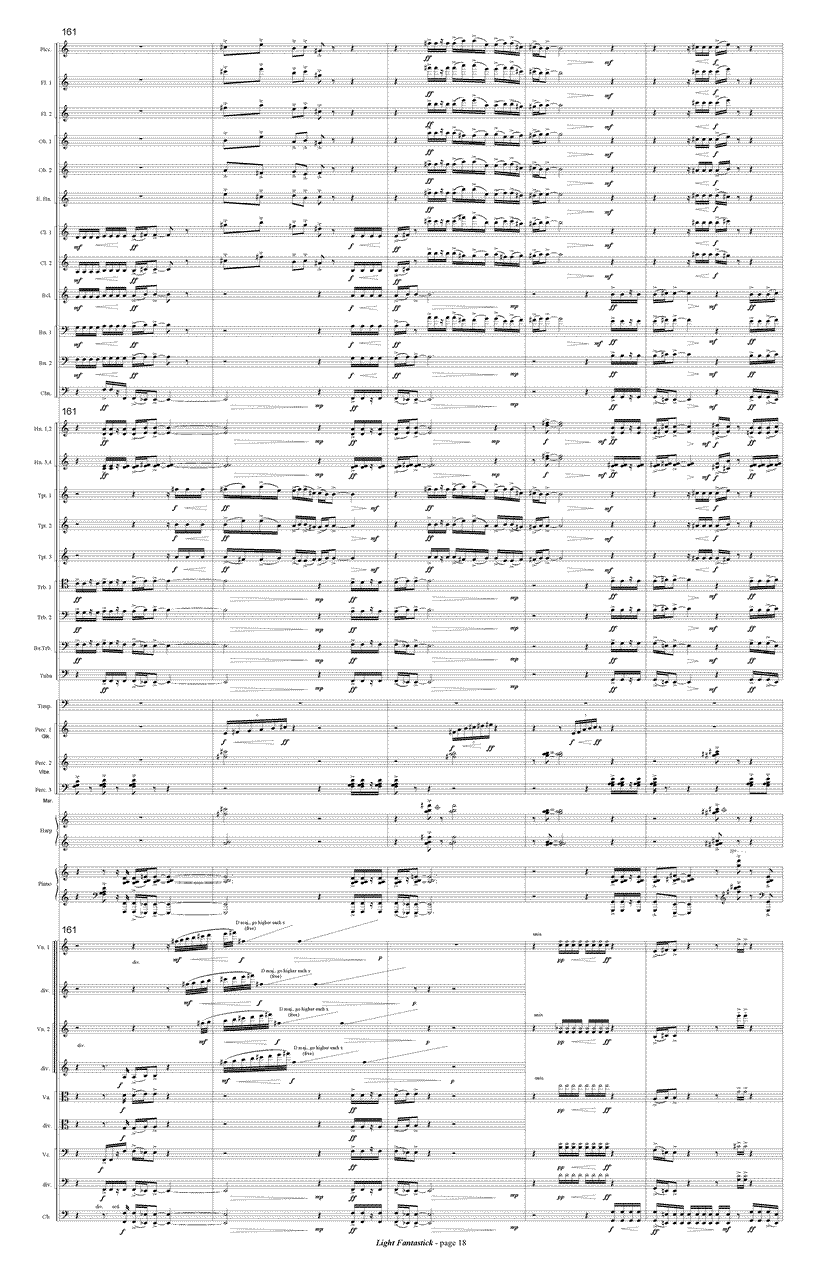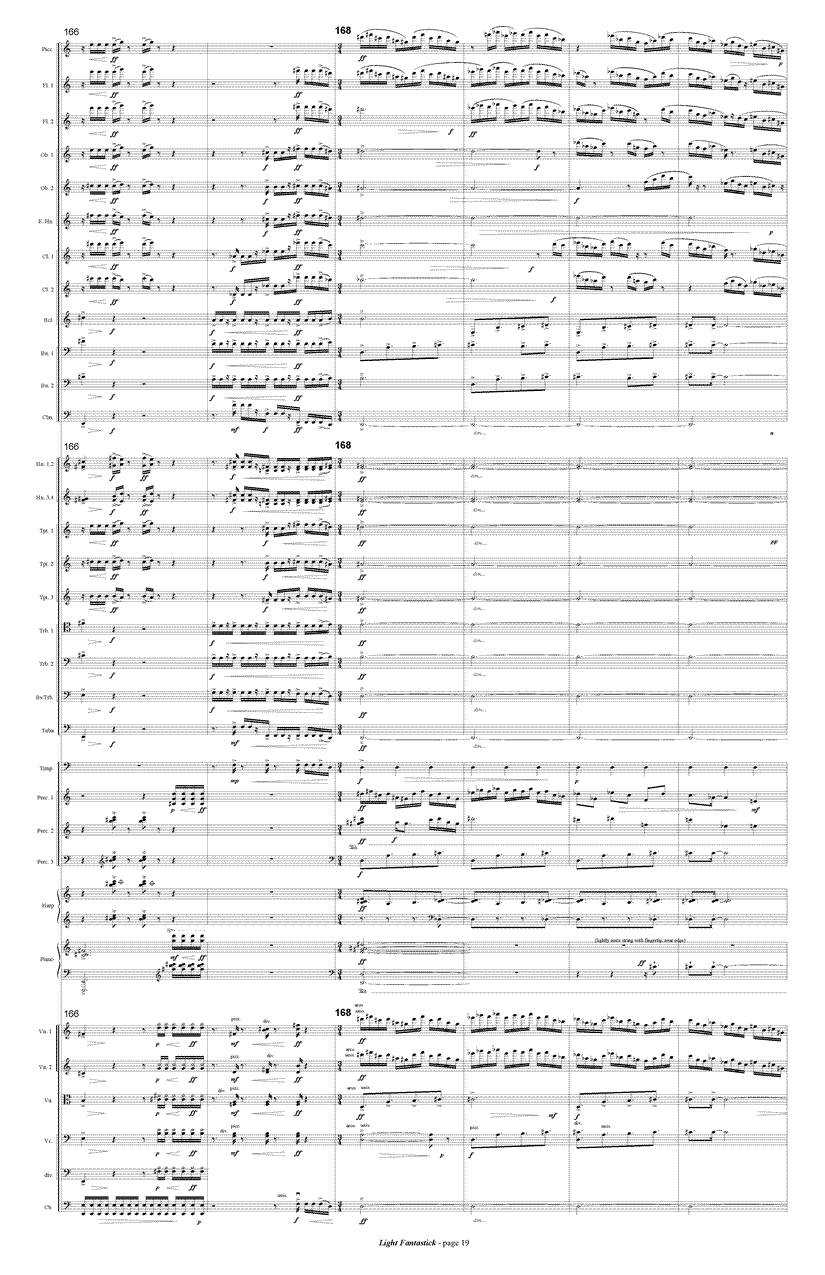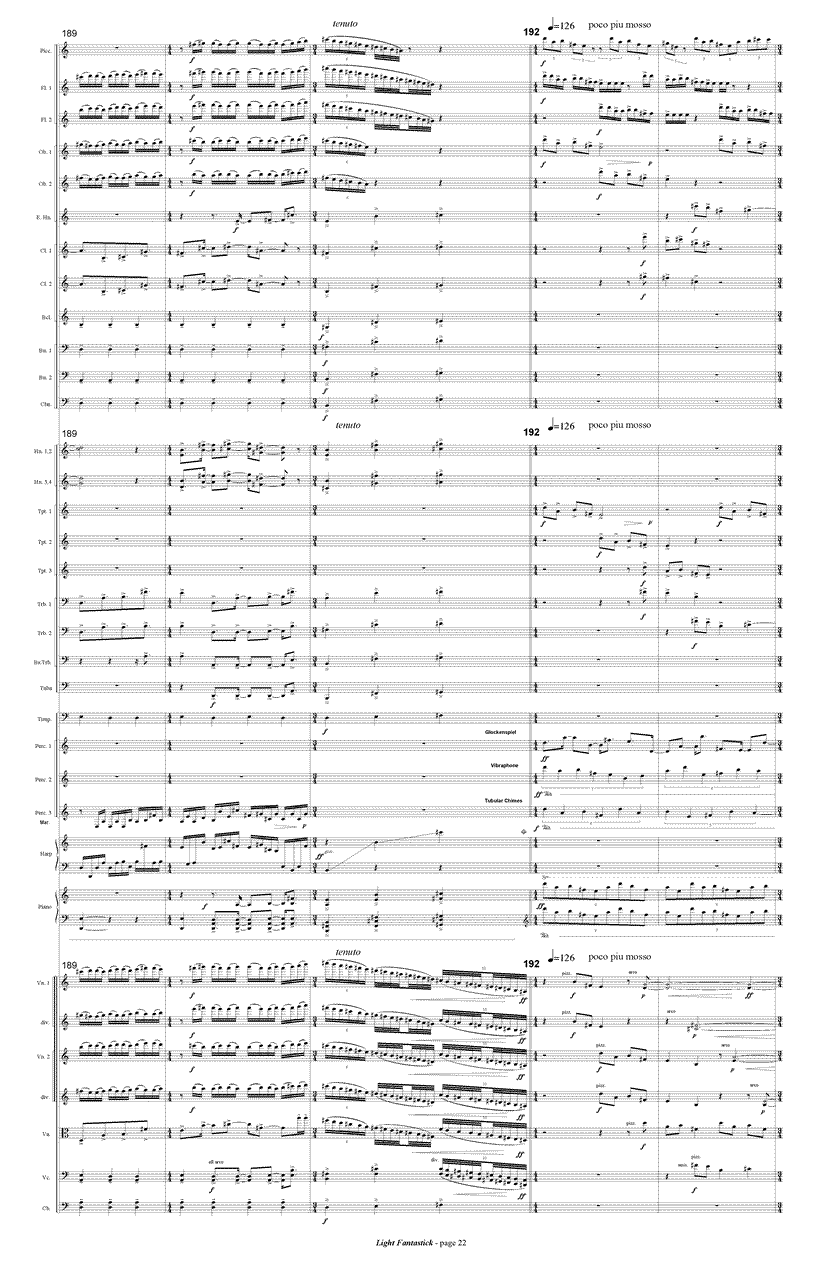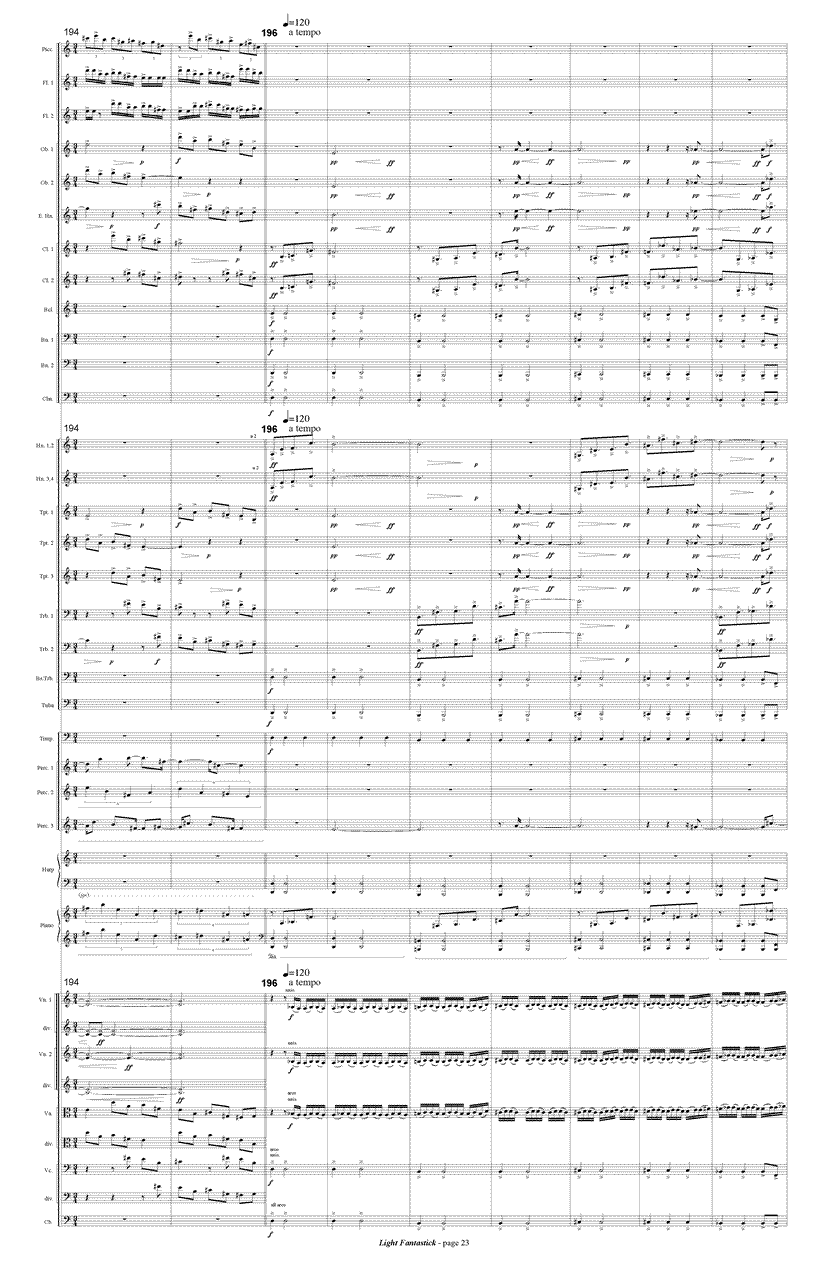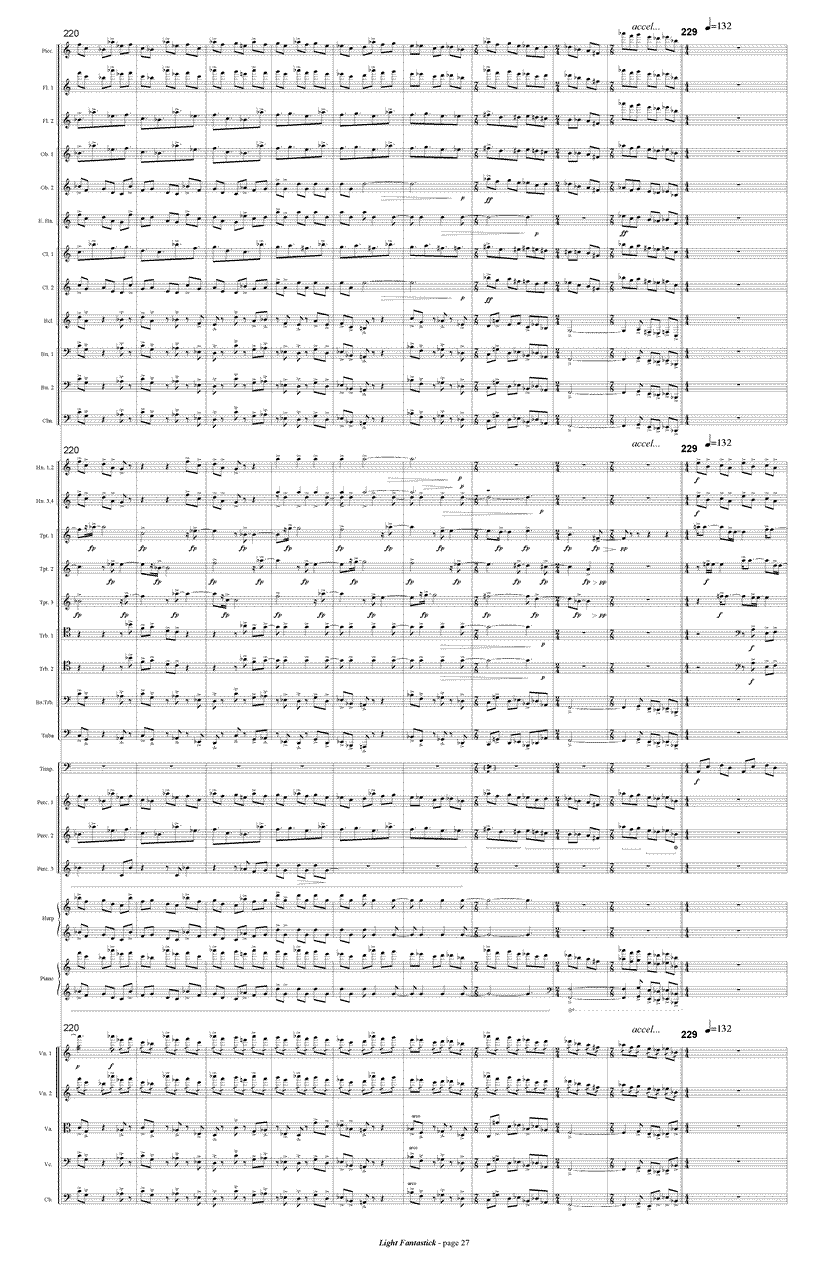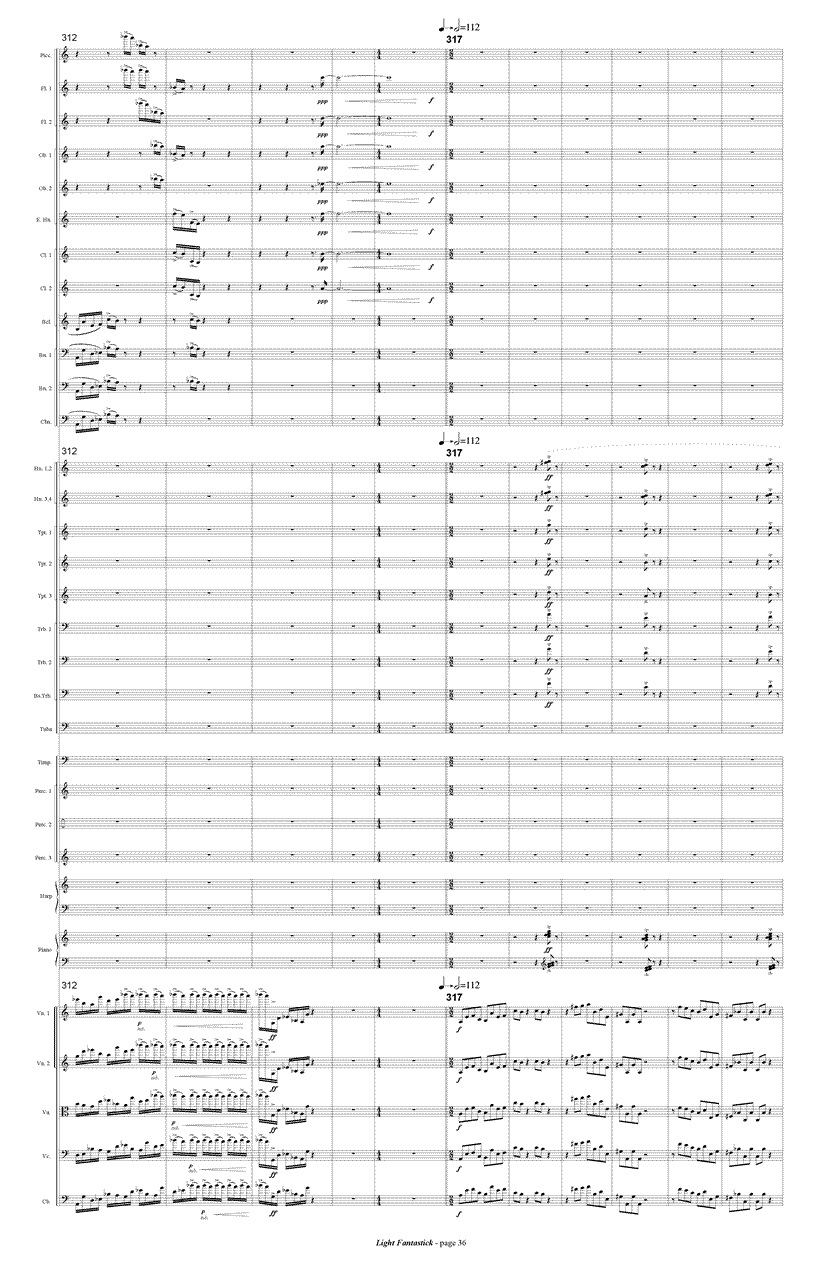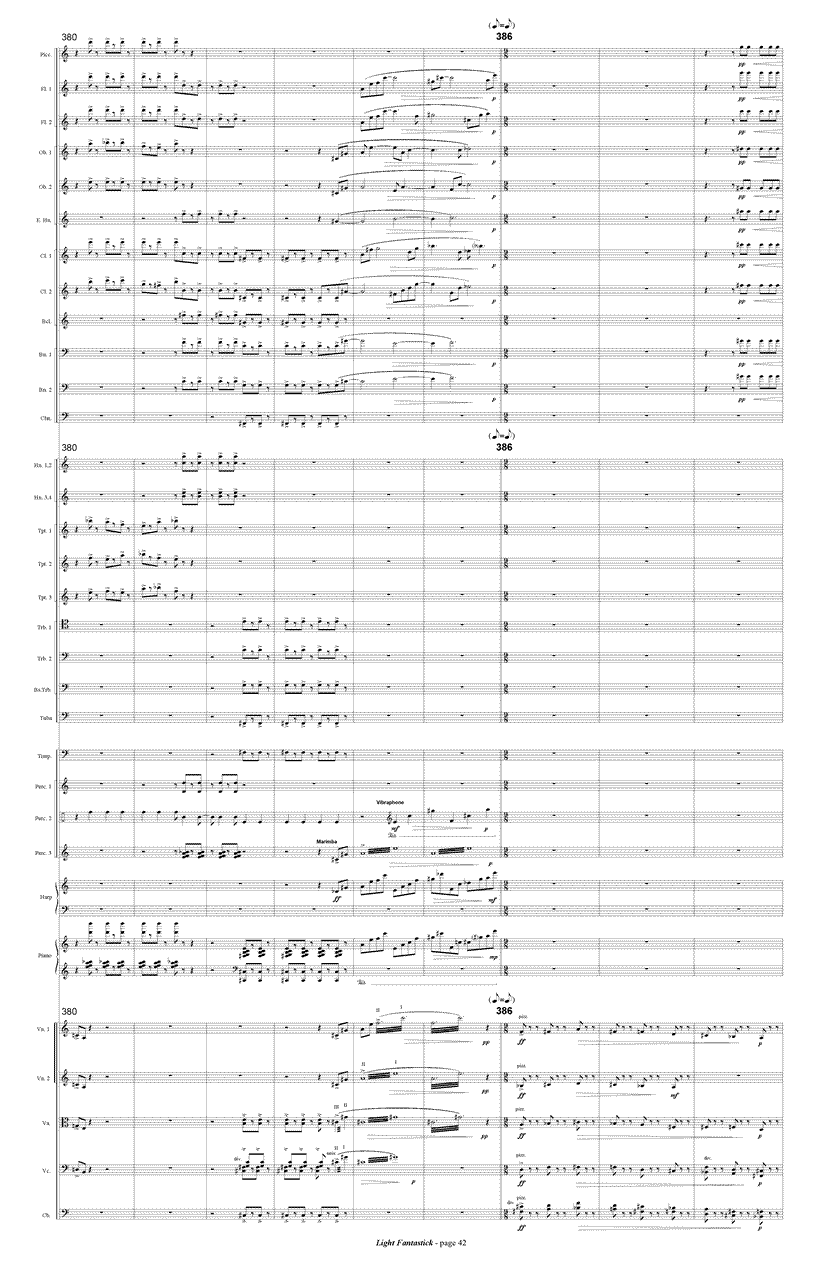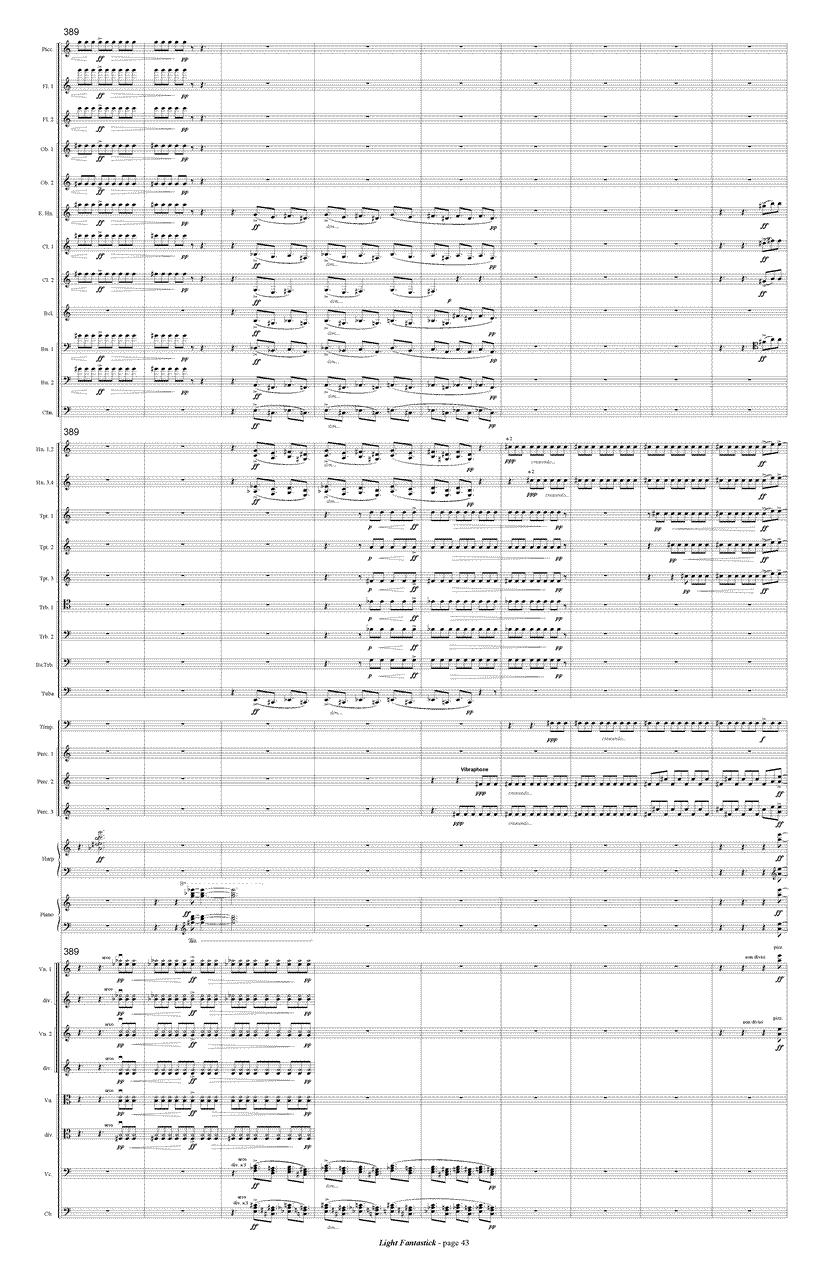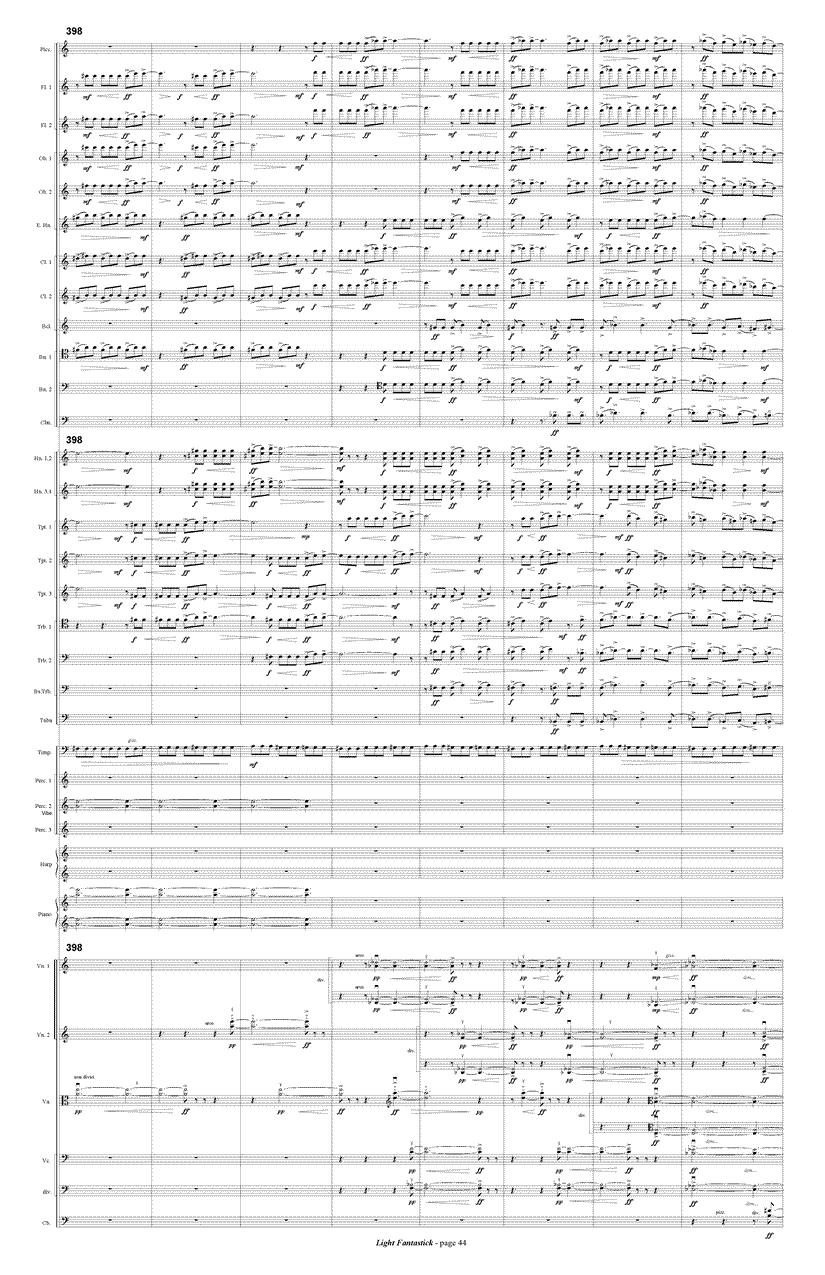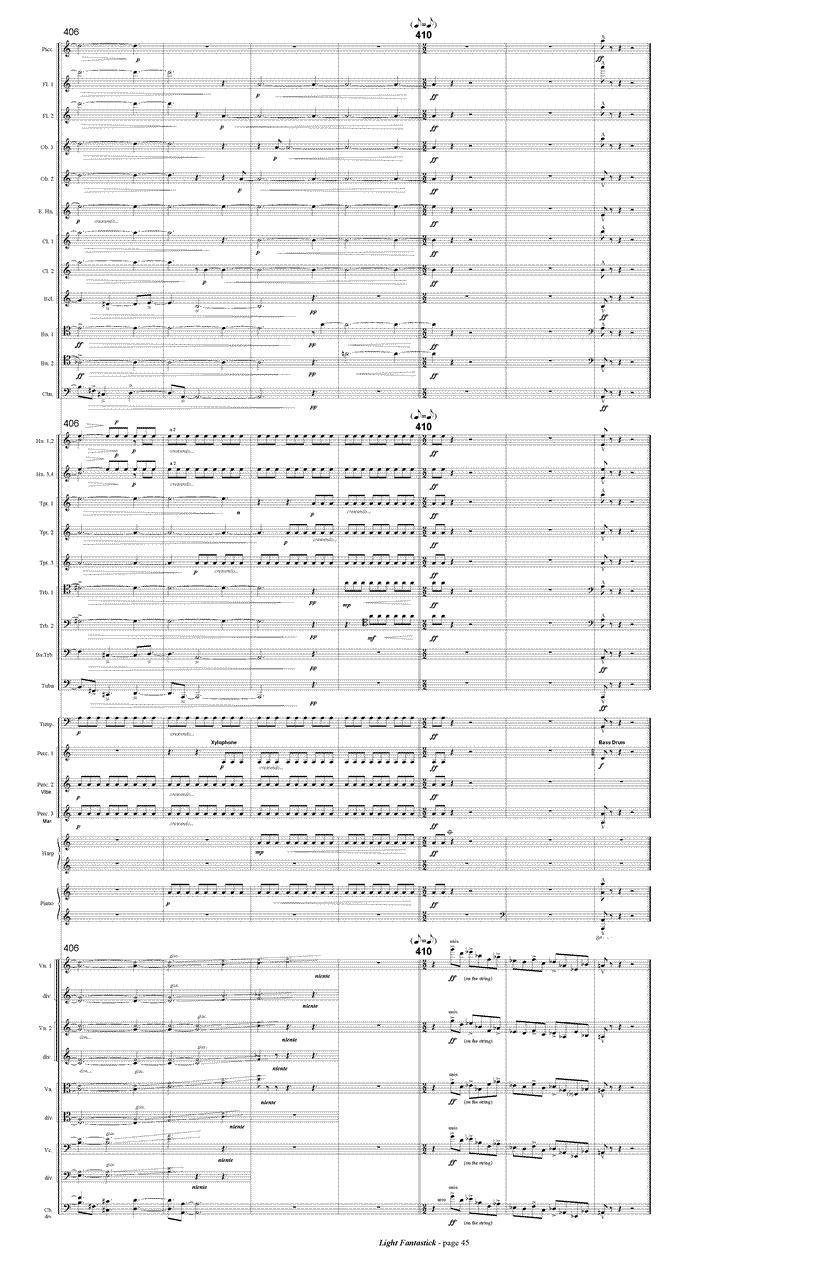Light Fantastick
(2007) for orchestra
instrumentation:
3(3=pic).3(3=E hn).3(3=bcl).3(3=cbn)/4331/timp.3perc.hp.pno/strings
duration: 11 minutes
premiere:
Green Bay Symphony Orchestra, Bridget-Michaele Reischl, March 24, 2007
Performance at the University of Louisville New Music Festival, Nov. 8, 2017
University of Louisville Symphony Orchestra, Kimcherie Lloyd
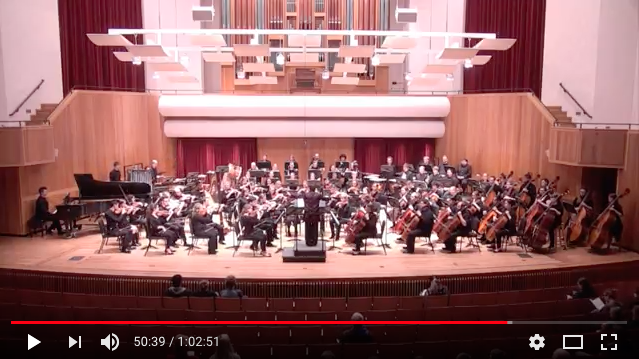
MIDI audio excerpt #1
MIDI audio excerpt #2
Perusal Score
Examples of "G-R-Een BAy" motive: (violin 1, measures 15-16, and measures 311-312)
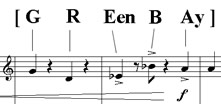

This motive is ubiquitous in the composition. It is used harmonically and melodically, sometimes using flats on the B and E, as above, and sometimes using natural B and E. The motive is used in various transpositions, inversions, reorderings, interval expansions and contractions, etc. In the end, it provides the central 'sound' of the composition. I believe listeners will hear this sound and the connections created throughout the piece whether or not one knows much about music theory or has been told or read anything about this motive.
Commissioned by the Green Bay Symphony Orchestra, Bridget-Michaele Reischl, Music Director
This work was funded in part by the Composer Assistance Program of the American Music Center
Program Note
Light was in my thoughts since first imagining composing a work for the Green Bay Symphony Orchestra, as early as 2004. This from memories of lying on my back at night in the middle of Lake Lucerne watching shooting stars in the clear north Wisconsin sky during August meteor showers. I began conjuring musical ideas reflecting stars and light, music that would glow, shine, spark, flash, shade, illuminate.
In the end I composed a fantasia for orchestra using a title from John Milton’s poem to the goddess Mirth: “…com, and trip it as ye go / On the light fantastick toe…” In Milton, “trip” means to step or dance full of life and vigor; “fantastick,” fancifully imagined. Though at times mirthful, Light Fantastick it is not a setting of the poem; rather, it is a fantasy on aspects of light, and also on a five tone motive built from pitch names found in “Green Bay” (G-D-E-B-A). R equates to the pitch D through solfege (Do-Re-Mi-Fa-Sol-La-Ti-Do).
Sparks initiate this fantasia by way of plucked strings, soon combined with percussive wood sounds and woodwind flashes. Once ‘ignited,’ the composition progresses in the manner of most fantasias; that is, following its own rather spontaneous path, generally gaining momentum, diverging here and there, but always in search of new ways to reflect and illuminate the central themes of Light and Green Bay.
from John Milton’s (1608–1674) L’Allegro:
Haste thee, Nymph, and bring with thee
Jest, and youthful Jollity,
Quips and cranks and wanton wiles,
Nods and becks and wreathed smiles
Such as hang on Hebe's cheek,
And love to live in dimple sleek;
Sport that wrinkled Care derides,
And Laughter holding both his sides.
Com, and trip it, as you go,
On the light fantastick toe;
And in thy right hand lead with thee
The mountain-nymph, sweet Liberty;
And, if I give thee honour due,
Mirth, admit me of thy crew,
To live with her, and live with thee,
In unreproved pleasures free ...
To hear the Lark begin his flight,
And singing startle the dull night,
From his watch-towre in the skies,
Till the dappled dawn doth rise;
Then to com in spight of sorrow
And at my window bid good morrow,
Through the Sweet-Briar, or the Vine,
Or the twisted Eglantine.


